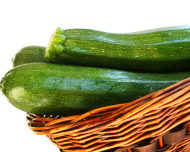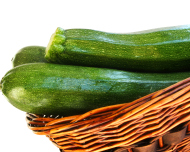What Is Squash?
Growing up, there are few vegetables which kids dread more than squash. And who could blame them, really? One bad encounter with a specific food is usually enough to scar someone for life. Every time they think of squash, they can probably only think of some overcooked, unrecognizable, mushy orange mass with its syrupy sweetness. But that's a bit unfair, because there are so many varieties of squash that there just might be one out there that changes their minds. And cooked properly, they can be delicious.
zucchini, crookneck, and pattypan. Summer squash have thin skins and small seeds that can be eaten, and their watery flesh which doesn't require much cooking yields a fairly neutral flavor. They reach their peak between June and September, although the name can be misleading, as it is common to see some types, such as zucchini, year-round now in supermarkets. Look for those with vibrant skin free of any cuts or blemishes. (Photo courtesy of Stock.XCHNG/nkzs)
kabocha squash, a Japanese winter variety that resembles a green pumpkin and is becoming increasingly available in supermarkets. In contrast to summer squash, these have thick, tough skins and seeds, and solid flesh that holds up well to cooking for long periods. When shopping for winter squash, select ones that are hefty in size and have a hard, solid rind free from bruises. (Photo courtesy of Stock.XCHNG/alexiares)
All squash are generally low in fat and sodium, and are a good source of dietary fiber, the antioxidant beta carotene, potassium, and calcium. They are technically a fruit in the biological sense, since they are seed-bearing, and are members of the gourd family in the Western Hemisphere. Squash was eaten in Mexico as early as 5500 B.C., but this food has played an important role in many cultures around the world. The Romans believed that when eaten together with honey, squash could help ease digestion (it was probably all that fiber) while some Native Americans considered it to be one of the "Three Sisters," a combination of crops that were mutually beneficial to each other — the other two being corn and beans. And of course, we take pumpkins and carve faces on them and give them life with candles.
soups, salads, side dishes, main courses, and even breads, muffins, cakes, and pudding. The possibilities are nearly limitless; just use your imagination. (Photo courtesy of flickr/elana's pantry)
So give squash a second chance. They're versatile, nutritious, and satisfying. And you may just decide that you like them after all.

